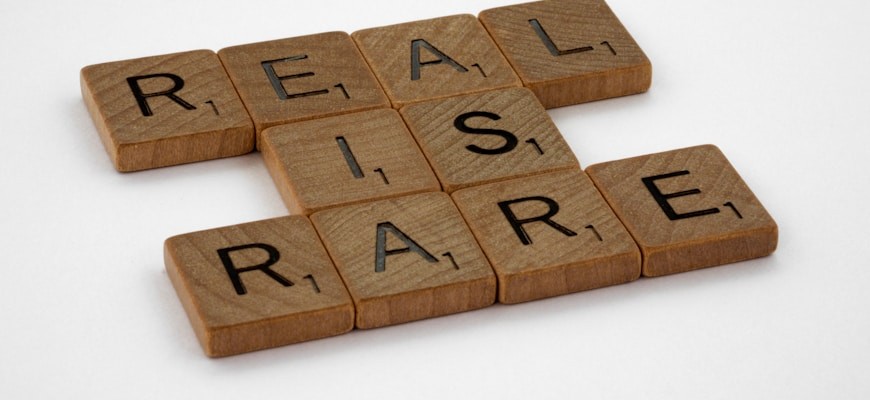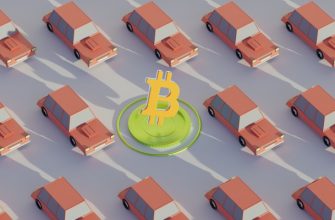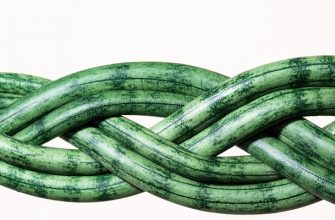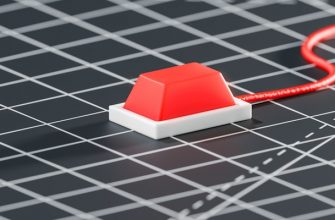- Defining Real-World Assets: A Comprehensive Overview
- The Role of RWAs in Modern Financial Systems
- How RWAs Bridge the Gap Between Physical and Digital Economies
- Investment Opportunities: Why RWAs Are Gaining Popularity
- Challenges and Risks Associated with Real-World Assets
- The Future of RWAs: Trends and Innovations to Watch
Defining Real-World Assets: A Comprehensive Overview
Real-world assets (RWA) encompass a broad range of tangible and intangible items that hold intrinsic value in the marketplace. These assets include physical items such as real estate, commodities, and tangible goods, as well as financial instruments like stocks, bonds, and intellectual property. The significance of real-world assets lies in their ability to bridge the gap between traditional finance and the emerging digital economy.
Understanding real-world assets requires a recognition of their role in the global economy. They serve as a foundation upon which various financial systems operate, offering security and stability. The rise of digital currencies and blockchain technology has catalyzed a renewed interest in real-world assets, as they can now be tokenized, allowing for greater liquidity and accessibility.
- Real estate: Properties that can be bought, sold, or rented, providing consistent income streams and long-term appreciation.
- Commodities: Physical goods such as gold, oil, and agricultural products that are traded on various exchanges, reflecting market demand and supply.
- Financial instruments: Stocks, bonds, and derivatives representing ownership or debt, which are essential for capital markets.
- Intellectual property: Patents, copyrights, and trademarks that offer legal protection and can generate revenue through licensing.
Investing in real-world assets is often viewed as a hedge against inflation and economic uncertainty, making them a vital component of diversified investment portfolios. The tokenization of real-world assets facilitates fractional ownership, enabling smaller investors to participate in markets that were previously inaccessible. This democratization of investment opportunities enhances liquidity and opens new avenues for asset management.
In conclusion, real-world assets are integral to understanding the dynamics of both traditional and modern financial landscapes. As the digital economy continues to evolve, the importance of real-world assets in driving innovation and ensuring financial stability cannot be overstated.
The Role of RWAs in Modern Financial Systems
Real-World Assets (RWAs) play a crucial role in modern financial systems by bridging the gap between traditional finance and digital asset ecosystems. These tangible or intangible assets, such as real estate, commodities, and financial instruments, provide a foundation for value creation and investment opportunities. The integration of RWAs into financial markets enhances liquidity, allowing for more efficient capital allocation and risk management.
RWAs contribute to the diversification of investment portfolios, enabling investors to access a broader range of asset classes. This diversification mitigates risks associated with market volatility and economic uncertainty. Furthermore, RWAs can also enhance transparency and trust within financial transactions, as the underlying assets are often subject to regulatory oversight and due diligence processes.
- RWAs facilitate the tokenization process, transforming physical assets into digital tokens, which can be traded on blockchain platforms.
- The inclusion of RWAs in decentralized finance (DeFi) applications allows for innovative financial products and services that are more accessible to a wider audience.
- RWAs serve as collateral in various lending protocols, thereby improving the liquidity of digital assets.
- Investors benefit from the stability offered by RWAs during times of economic upheaval, as these assets tend to retain their value better than purely digital currencies.
The significance of RWAs in modern financial systems cannot be overstated. By integrating RWAs into digital frameworks, financial institutions can enhance their offerings, create more robust trading environments, and foster greater financial inclusion. The evolution of RWAs continues to shape the landscape of finance, making it essential for stakeholders to understand their implications and potential benefits.
How RWAs Bridge the Gap Between Physical and Digital Economies
Real-world assets (RWAs) serve as a vital link between the physical and digital economies, playing an essential role in the evolving landscape of finance and investment. By tokenizing tangible assets, RWAs facilitate seamless transactions and ownership transfer across blockchain networks, effectively merging the traditional asset world with digital finance.
The significance of RWAs lies in their ability to enhance liquidity and accessibility. Investors can now acquire fractional ownership of high-value assets, such as real estate or art, which were previously difficult to access. This democratization of investment opportunities is transforming the financial ecosystem, allowing a broader range of individuals to participate in wealth generation.
Moreover, RWAs improve transparency and security. Utilizing blockchain technology ensures that every transaction involving real-world assets is recorded immutably, reducing fraud risks and increasing trust among parties. This level of transparency is crucial for building confidence in the digital economy, especially as more individuals and institutions transition to blockchain-based solutions.
- Tokenization: RWAs can be represented as digital tokens, simplifying the process of buying, selling, and trading assets.
- Fractional Ownership: Investors can own a portion of an asset, lowering the barriers to entry for individuals looking to diversify their portfolios.
- Enhanced Liquidity: RWAs can be traded on various platforms, providing liquidity to traditionally illiquid assets.
- Increased Security: The use of blockchain technology reduces the likelihood of fraud and enhances the overall security of transactions.
- Global Access: RWAs enable investors from around the world to participate in markets that were previously restricted by geography.
In conclusion, RWAs are pivotal in bridging the gap between physical and digital economies. They provide innovative solutions that enhance liquidity, democratize access to investment opportunities, and ensure secure transactions. As the digital economy continues to evolve, RWAs will undoubtedly play a crucial role in shaping the future of finance and investment.
Investment Opportunities: Why RWAs Are Gaining Popularity
Investment opportunities surrounding Real-World Assets (RWAs) are becoming increasingly prominent in today’s financial landscape. As traditional investment avenues face volatility, RWAs offer a sense of stability and tangible value. This rise in popularity can be attributed to several factors that make RWAs an attractive option for both institutional and individual investors.
- Liquidity: RWAs provide enhanced liquidity compared to traditional assets. The ability to tokenize real-world assets allows for fractional ownership, making it easier for investors to buy and sell portions of high-value assets.
- Diversification: Investing in RWAs promotes portfolio diversification. By including real-world assets, investors can mitigate risks associated with market volatility and economic downturns.
- Transparency: The integration of blockchain technology in RWAs enhances transparency. Investors can track asset ownership and transaction history, reducing the potential for fraud and increasing trust.
- Accessibility: RWAs lower the barrier to entry for investors. Tokenization enables a broader range of participants to invest in high-value assets, which were previously accessible only to wealthy individuals or institutions.
- Inflation Hedge: Real-world assets often serve as a hedge against inflation. As the cost of living rises, the value of tangible assets tends to increase, preserving purchasing power.
The growing interest in RWAs is reshaping investment strategies. Investors are increasingly recognizing the benefits of incorporating real-world assets into their portfolios. The combination of liquidity, diversification, transparency, accessibility, and protection against inflation makes RWAs a compelling choice for modern investors seeking stability and long-term growth.
Challenges and Risks Associated with Real-World Assets
Understanding the challenges and risks associated with real-world assets (RWA) is crucial for investors and stakeholders looking to navigate this evolving market. Real-world assets represent tangible items that can be tokenized and traded on blockchain platforms, but they come with a unique set of challenges.
- Regulatory Uncertainty: The regulatory landscape surrounding real-world assets is still developing. Different jurisdictions may impose varying regulations, which can create confusion and limit market participation.
- Valuation Difficulties: Accurately valuing real-world assets can be complex. Factors such as market demand, asset condition, and economic fluctuations can impact the valuation process.
- Liquidity Concerns: While blockchain technology aims to enhance liquidity, many real-world assets may still have limited market access. This can lead to challenges in buying or selling these assets quickly.
- Fraud Risks: The potential for fraud is a significant risk in the realm of real-world assets. Ensuring the authenticity and ownership of physical assets is critical to safeguard investments.
- Technological Barriers: The integration of real-world assets into blockchain systems requires sophisticated technology. Not all stakeholders may possess the necessary technical knowledge or resources to participate effectively.
Addressing these challenges is vital for the successful adoption and integration of real-world assets into the broader financial ecosystem. By understanding these risks, investors can make informed decisions and explore opportunities in the RWA market with greater confidence.
The Future of RWAs: Trends and Innovations to Watch
The landscape of Real-World Assets (RWAs) is undergoing significant transformation, driven by technological advancements and evolving market demands. The integration of blockchain technology with RWAs is at the forefront of innovation, creating new opportunities for asset tokenization and enhancing liquidity. As the RWA market expands, several key trends are emerging that will shape its future.
- Tokenization of Assets: The process of converting physical assets into digital tokens is revolutionizing how investments are made. This trend allows for fractional ownership, enabling a broader range of investors to access high-value assets.
- Decentralized Finance (DeFi) Integration: RWAs are increasingly being integrated into DeFi platforms, providing innovative financial solutions such as lending and borrowing against real assets. This integration enhances liquidity and opens up new avenues for investment.
- Regulatory Developments: As the RWA market grows, regulatory frameworks are evolving to ensure investor protection and market integrity. These developments will play a crucial role in mainstream adoption and acceptance of RWAs.
- Enhanced Security Measures: The use of smart contracts and blockchain technology increases transparency and security in RWA transactions. This innovation reduces fraud risk and builds trust among investors.
- Environmental, Social, and Governance (ESG) Factors: There is a growing emphasis on incorporating ESG principles into the RWA space. Investors are increasingly seeking assets that align with their values, driving demand for sustainable and responsible asset management.
In summary, the future of Real-World Assets is bright, characterized by innovative trends and robust developments. The emergence of tokenization, DeFi integration, regulatory advancements, enhanced security, and a focus on ESG factors are all factors contributing to the evolving RWA landscape. These trends indicate a significant shift in how investments are approached, enhancing accessibility and promoting a more inclusive financial ecosystem.










I had no idea about Real-World Assets (RWA) until I came across this article. It’s fascinating to learn how blockchain technology is revolutionizing the real estate industry. Can you provide more examples of RWA and how they are tokenized?
As someone who is interested in both cryptocurrency and real estate, this article was a great read. Understanding the significance of Real-World Assets (RWA) in the blockchain space is crucial. How can one invest in tokenized real estate assets and what are the risks involved?
I’ve been following the developments in blockchain technology, but I never realized the potential impact it could have on real estate. This article provided a clear explanation of Real-World Assets (RWA) and their importance. How can tokenization benefit both investors and property owners?